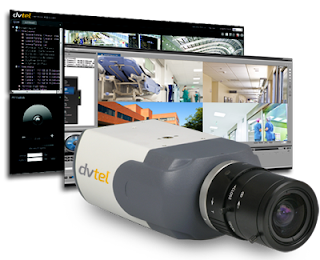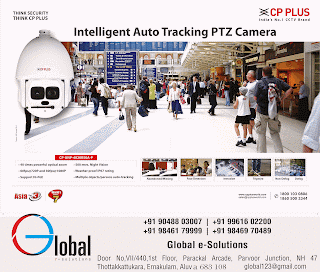Choosing a Right Home Digital Security

Automation of Digital
Home Security isn’t just for the wealthy Peoples any more. Anyone looking to
protect their home, property, and family should consider buying home
surveillance equipment. Once part of Luxury (Costly) equipment has become
considerably necessary (lower in price)
one now a days, allowing homeowners of all budgets the ability to protect their
parents, spouses and children.
Before buying
home CCTV surveillance equipment, decide on certain factors. Choose between an
indoor or outdoor system, decide on a number of cameras, pick out desired
features, and choose a storage system. Buying video surveillance equipment
doesn’t require a lot of technical knowledge but it does require a bit of
research. Consumers can find home surveillance equipment in electronic stores
and speciality monitoring shops.
 Types
of Home
Surveillance Systems
Types
of Home
Surveillance Systems
First time buyers considering home surveillance
equipment can feel a bit overwhelmed. However, once they have learned a few
technical terms and device types, consumers can start to feel more confident
about their investment on security. The first step is to narrow down the type
of security system you need. You can choose from either an indoor or outdoor
home surveillance system.

Indoor
Home Surveillance
Indoor
video security is
useful for many reasons. Cameras can be used to keep an eye on domestic labours,
relatives, construction workers, and anyone else that might be in your home
when you are away. Consumers can monitor multiple rooms, or just one area.
Indoor cameras generally produce a high quality picture.
Outdoor
Home Surveillance
Meant to deter
or catch home intruders, outdoor cameras can be very discrete or extremely
obvious. Larger cameras can be advantageous because it might prevent criminals
from trying to break in. Outdoor
home surveillance cameras
are built to withstand the elements. They are usually waterproof and might even
have wipers to protect the lens. Buyers can monitor one specific area, like the
front door, or have multiple cameras to watch the whole property.
Camera
Choices
Buyers can choose from single cameras, indoor multi-room cameras, whole
house cameras, and hidden cameras. Price and need generally dictate which type
of cameras consumers buy. Single cameras are useful for monitoring a front door or a single
room. Multi-room and whole house cameras are good for both indoor and outdoor uses. Hidden
surveillance is good for nanny cams and discrete filming.
Types
of Cameras
 Consumers can choose from many different types of
home surveillance cameras. You can either buy individual cameras or purchase an
entire home surveillance system. Consumers only interested in purchasing one or
two security cameras might be better off buying the equipment separately. Some
examples of cameras include:
Consumers can choose from many different types of
home surveillance cameras. You can either buy individual cameras or purchase an
entire home surveillance system. Consumers only interested in purchasing one or
two security cameras might be better off buying the equipment separately. Some
examples of cameras include:
Some homeowners
choose to purchase multiple camera types for various uses. Consumers looking to
deter criminals might purchase a larger outdoor camera to intimidate potential
intruders. Those who want to keep an eye on nannies and housekeepers might opt for
a hidden camera. Many buyers choose to purchase multiple cameras of different
types for maximum protection.
Once you have determined which type of home
surveillance equipment you want, it’s time to decide on the different features.
Features affect the quality of the camera, as well as the price. Consumers can
compromise on certain features depending on their needs and budget. Before
buying home surveillance equipment, you need to choose between wired and
wireless, color or black and white, resolution, and coverage.
Wired
vs. Wireless
Wired and wireless home surveillance equipment both have advantages and
disadvantages. The term "wireless" refers to the signal transmitted
by the camera. Wireless cameras have more flexibility and are generally more
discrete. Consumers have the freedom to install them wherever they are needed.
However, interruptions from the wireless Internet can affect the signal. You
might lose a few minutes, hours, or even days of recording time if the wireless
network isn’t properly working.
Wired
cameras can be harder to install and are often less
discrete. The wires can be cumbersome and unattractive. However, wired cameras
often offer users a clearer picture and more reliable service. Wired cameras
are also good for new construction where the wires can be built into the walls.
They can be installed as part of a complete home security system or structured
wiring network.

Colour
vs. Black and White
In most instances, colour is not necessary for home surveillance
equipment. Sometimes, businesses and commercial properties use color cameras,, but chances are you won’t need that feature in a
home video security system. However, buyers should look for a camera that
produces a high quality black and
white image... A grainy picture won’t be
useful when trying to identify an intruder. Those using an outdoor system
should definitely look for a camera with night vision capabilities.
Surveillance systems with this feature can capture high quality images at
night. Outdoor cameras in low light can benefit from infrared LED
technology, which can illuminate an area.
Resolution
 As with any electronic device, a higher resolution
equals increased image quality. A typical home CCTV camera has about 900 TV
lines (TVL) of resolution. High-resolution cameras, with 1MP, 1.3MP, 2MP, and
in higher qualities offer crystal clear images and superior accuracy. However,
most residential users won’t need a high-resolution camera. Introduction of AHD
Cameras the High definition is no more for commercial projects, it can be
affordable to normal people
As with any electronic device, a higher resolution
equals increased image quality. A typical home CCTV camera has about 900 TV
lines (TVL) of resolution. High-resolution cameras, with 1MP, 1.3MP, 2MP, and
in higher qualities offer crystal clear images and superior accuracy. However,
most residential users won’t need a high-resolution camera. Introduction of AHD
Cameras the High definition is no more for commercial projects, it can be
affordable to normal people
Coverage
The amount of area a camera lens can cover varies
greatly. Some cameras only shoot directly in front of the lens. Wide-angle
lenses cover a larger space, while pan-tilt-zoom cameras can videotape a
360-degree view. For outdoor cameras, choose an automatic iris, which
automatically adjusts to different levels of light.
Video
Surveillance Storage
Consumers need a device to record and store their
footage. Gone are the days of VHS tapes. Now, users can digitally record hours
of high quality footage on a hard drive. While choosing a DVR / NVR recorder is
going to be a straightforward decision, the biggest choice home video
surveillance buyers will need to make is between an IP, AHD or analog camera.
DVR
/ NVR
A DVR
/NVR allows
users to store a certain amount of footage on a hard drive. A 3 TB hard drive
records for about 60-75 days. Larger storage amounts are available and the
amount of storage you will need depends on the number of cameras you have and
your camera type. The advantage of a DVR or NVR is that you can immediately
access any point within the video and monitor the footage remotely. Typically,
a DVR offers higher quality video than VHS tapes – it is no more using in
present time.

IP
and Analog
IP and analog
cameras offer two different types of access to the camera’s footage. An IP camera connects to
the homeowners’ network System. You can access the camera via the camera’s URL
address. While IP relies on your home’s Network bandwidth, it also works well
with wireless systems. Present condition IP Camera offers wide range HD, Full
HD videos and it is useful for analysis. IP Camera still costliest, but its
price is come down last few months, because of tough competitions from AHD a
new generation analog CCTV camera.
Analog surveillance systems,,
also known as closed-circuit televisions, are less expensive and can record
endless hours of footage. They convert the analog signal into digital before
processing the footage. Analog systems are sometimes more appropriate for the
home because they don’t take up much network bandwidth. However, IP cameras are
generally better for connecting multiple wireless cameras. Now analog High Definition
cameras are available which is offers almost equal quality of video HD Network
camera. The price is less compare to IP Camera. HDCVI, HDTVI, HD-SDI, AHD are
new type of Analog High Definition Cameras in market.
Tips
for Video Surveillance
Sometime buyers might feel a little lost when
purchasing their first video surveillance system. But buyer should think
present scenario, migration is high level, and most of the time they may not
know who is living in next door. And increased labour migration and less jobs
leads the people to do something risky to live. Surveillance is now a days a integrated
part of our life, Prevention is
better than cure. Always take
your time and do plenty of research on the equipment. Internet gives great
knowledge and when you choose a CCTV integrator, do not look the bottom price,
but also look their credibility and experience. In order to increase security
and effectiveness, follow a few simple tips before and after buying:
·
Know first your Security requirements
and what type of surveillance you are looking for your home and private
property.
·
Plan your budget and decide what type Surveillance
matching with the price and your requirements.
·
Ask your friends: The
best recommendations often come from friends and family.
·
Ask the experts: Consult
with surveillance experts to find out more about particular equipment. Do not
depend try freelancing people for installation, sometime it may reduce the
cost, but when it comes to after sales service, you cannot compromise your
security. CCTV Camera System give you confidence, even your home and private
property is safe under camera. When a trouble came, by complaint of the system,
you will really loss confidence and cameras are meant for 24x7 work. So trust
the professionals and sign an agreement with them. Better to sign an
agreement with comprehensive warranty
·
Try to spread to others that you are installed
Security Camera to others. Thus the information will help to reduce the crime
within the locals.
·
Security signs letting people know about your
surveillance systems help deter intruders.
How
to Buy Home
Surveillance Equipment in Kerala
Purchasing Home Surveillance Equipment is an
excellent way to keep your family and property safe and secure. CCTV Video
surveillance helps to prevent intruders from entering to your home and indoor
cameras keeps an eye on people when you are away from home. Consumers can
choose from a single front camera with
SD Card, Cameras in common area , whole house systems, or hidden
"spy" cameras(it depends on your need, if you suspect some in knows
you doing wrong thing then you can use). Buyers need to pick between wired or
wireless systems and colour or black and white (now it is rare in use. But good
in Night view because it consume less power and will work in low light condition).
You must also choose a camera resolution and coverage amount.
Don’t forget to buy a higher storage system and its
size depends on the number of cameras and how much time we need to keep our
videos, unless you plan to monitor your video surveillance 24/7. Most buyers
use a DVR/ NVR recording device and either an IP or analog system (Now AHD).




Comments
Post a Comment